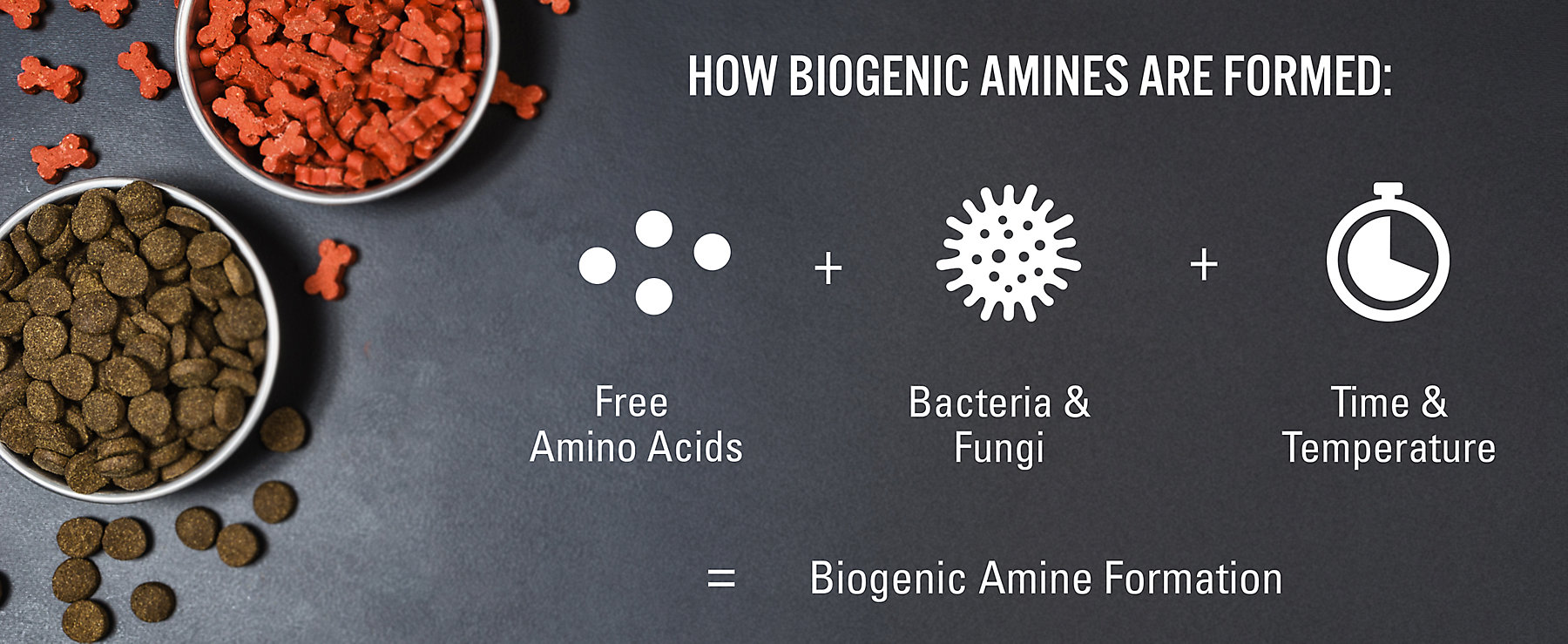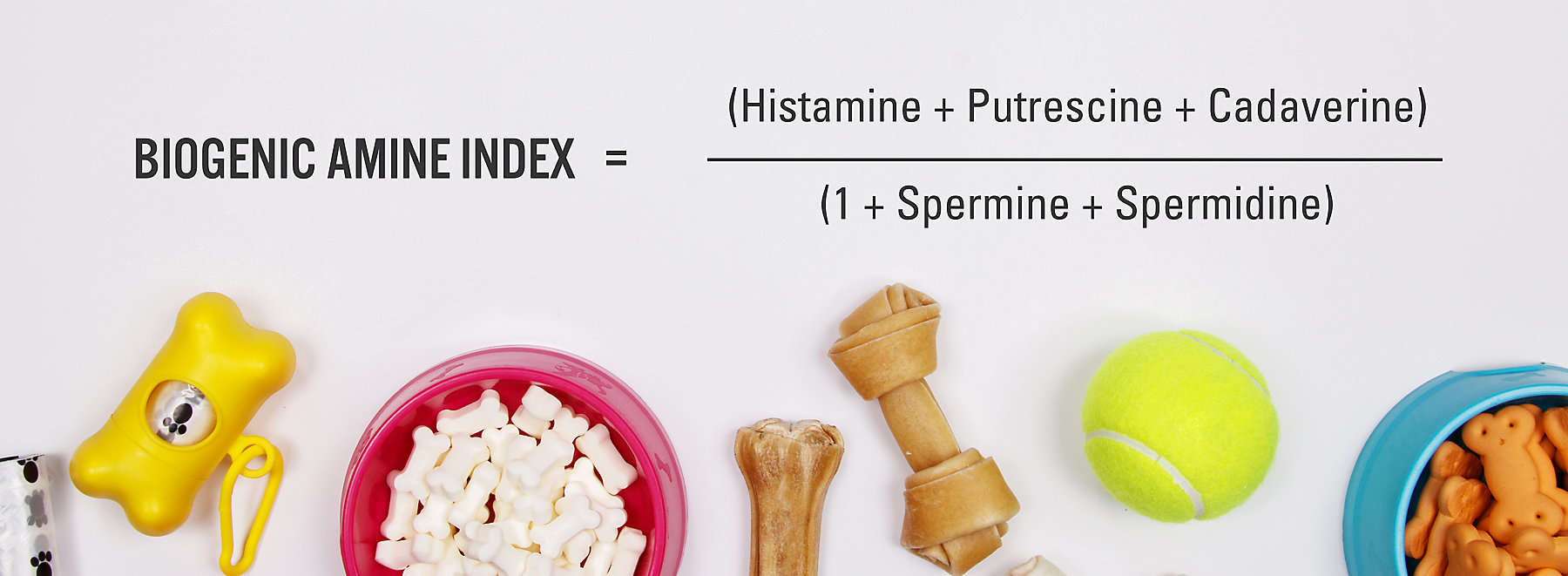Jim Mann, Global Platform Manager: Antioxidants & Food Safety | Kemin Nutrisurance
Jim has been at Kemin for over 30 years fulfilling a variety of roles in quality control, research and development, and technical services.
Biogenic amines are compounds synthesized during the normal metabolic functions of plants and animals.1 Many dietary amines play important roles in human and animal physiological functions.2,3 They can also be present in foods from enzymatic degradation of amino acids due to elevated microbial activity. At elevated levels biogenic amines can be an indicator of food quality and can become potential health hazards.4
Not all biogenic amines have toxic effects and toxicity can vary based on the person or animal affected. Some amines are found naturally in human foods, including meat, fish, cheese, wine, beer, and fermented foods.1 However, high levels of biogenic amines in food can indicate microbial spoilage.5
Accumulation of elevated biogenic amines in food can constitute a potential physiological and toxicological safety risk.

Once biogenic amines are formed, they are heat stable and cannot be destroyed by processing methods such as cooking, baking or canning.6 Histamine, tyramine, cadaverine and putrescine are biogenic amines with potential toxicity effects in animals when ingested at high levels.
Even after centuries of domestication, dogs and cats maintain similar genetic profiles to their wild canid and feline ancestors. It’s not uncommon for wild canids and felines to scavenge decomposed or spoiled carcass. Due to this, it appears they have developed adaptive mechanisms to metabolize and detoxify biogenic amines, and domestic dogs and cats may still maintain some of these mechanisms.7
There is a shortage of literature evaluating the precise effect of biogenic amines on dogs and cats due to ethical reasons. However, studies have shown elevated levels of biogenic amines can cause food poisoning and detrimental effects on palatability and nutrition. Pet food manufacturers should control biogenic amine formation in raw materials and finished products to avoid detrimental effects to the food or pet consuming it.
To evaluate product freshness, pet food manufacturers can use the Biogenic Amine Index.8 This index shows a biogenic amine ratio in a food product and can be used to indicate the degree of freshness or spoilage.

Kemin recommends implementing Good Manufacturing Practices (GMP) and the methods below to avoid biogenic amine formation and promote pet food product freshness:

Jim has been at Kemin for over 30 years fulfilling a variety of roles in quality control, research and development, and technical services.
1. Ruiz-Capillas C. and Herrero A.M. (2019). Impact of biogenic amines on food quality and safety. Foods. 8: 1-16.
2. Ten Brink B., Damink C., Joosten H.M.L.J., Huis in’t Veld J.H.J. (1990). Occurrence and formation of biologically active amines in foods. International Journal of Food Microbiology. 11: 73-84.
3. Kalač P. (2006). Biologically active polyamines in beef, pork and meat product: A review. Meat Science. 73: 1-11.
4. Bardócz S. (1995). Polyamines in food and their consequences for food quality and human health. Trends in Food Science & Technology. 6: 341-346.
5. Triki M., Herrero A.M., Jiménez-Colmenero F., Ruiz-Capillas C. (2018). Quality assessment of fresh meat from several species based on free amino acid and biogenic amine contents during chilled storage. Foods. 7: 132-148.
6. Hui Y.H. (2006). Handbook of food science, technology, and engineering. Volumes 1-4. 3618p.
7. Kim K.S., Backus B., Harris M., Rourke P. (1969). Distribution of diamine oxidase and imidazole-N-methyltransferase along the gastrointestinal tract. Comparative Biochemistry and Physiology. 31: 137-145.
8. Mietz J.L., Karmas E. (1978). Polyamine and histamine content of rockfish, salmon, lobster, and shrimp as an indicator of decomposition. Journal - Association of Official Analytical Chemists. 61: 139-145.